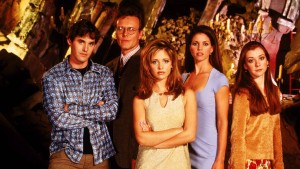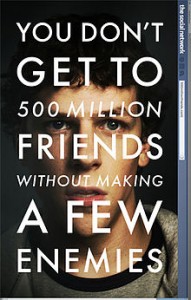Writing for Film, Filming for Writing: The Initiative
Solid Buffy reference, Paul. Buffy the Vampire Slayer is easily my favourite TV show, Joss Whedon easily my favourite writer/industry figure and I’m always up for an initiative reference on a Monday afternoon. I actually thought for this, the first of (presumably) many initiative-based posts, I might look at a few scripts for my favourite films and TV shows, and see if I can identify exactly what makes them work so well. I know already that a writer like Joss Whedon has a particular ‘voice’ that leaps from paper to screen, so maybe other films that I enjoy share that characteristic – a certain voice imbued by the writer?
Anyhow, I began with a Whedon script – the shooting script for ‘Welcome to the Hellmouth’, Buffy’s pilot episode. It’s apparent early on that Whedon embeds his signature wit into the work, as hints of his humour shine through in the big print. A description of Xander Harris chooses not to focus on the physically apparent, but instead reads:
“He is bright, funny, and will one day be suave and handsome. Til that day arrives, he’ll do the best he can with bright and funny.”
While it’s not groundbreaking humour, I think that it’s important to note because it ignores the more conventional screenplay staples. It doesn’t mention age or general appearance, instead showcasing the writer’s appreciation for lighthearted banter. This sets a tone for the script, and the show, that allows the actors and crew to get a grasp on what Joss Whedon is all about – how he operates.
The next script I looked at was Aaron Sorkin’s screenplay for The Social Network. I love the movie, and I enjoy a lot of Sorkin’s film and television work, so I thought it might be interesting to actually read one of his scripts. The Social Network was a fairly large departure from Buffy. For one thing, it didn’t rely on the structure of an hour length TV episode, with regular ad breaks scheduled and a cliffhanger ending. However, it also seemed more professional, in some ways. There were less humorous asides (although Sorkin does indulge in witticisms every now and then) and a much stronger focus on dialogue. That was a key element of the script – Sorkin seemed content to let the dialogue (in some cases, uninterrupted pages of it) set the scene, without offering particular directions in the big print. His screenplay was simple, stark and assured, which really did translate into the film itself, a film that’s cold and elegantly cruel, much like its protagonist.
Anyway, those are the scripts I looked into this week, but I thought I might make it a reoccurring project. I’ll read a script or two each week, and identify the particular characteristics of the writer that make into the film. The task actually set me to thinking – if these are examples of good media that draw on the ‘voice’ evoked by the script, do the inherent problems present in ‘bad’ or ‘boring’ examples (I’m looking at you, Transformers franchise) stem from the lack of a distinct voice? Something to look into, maybe.


Recent Comments